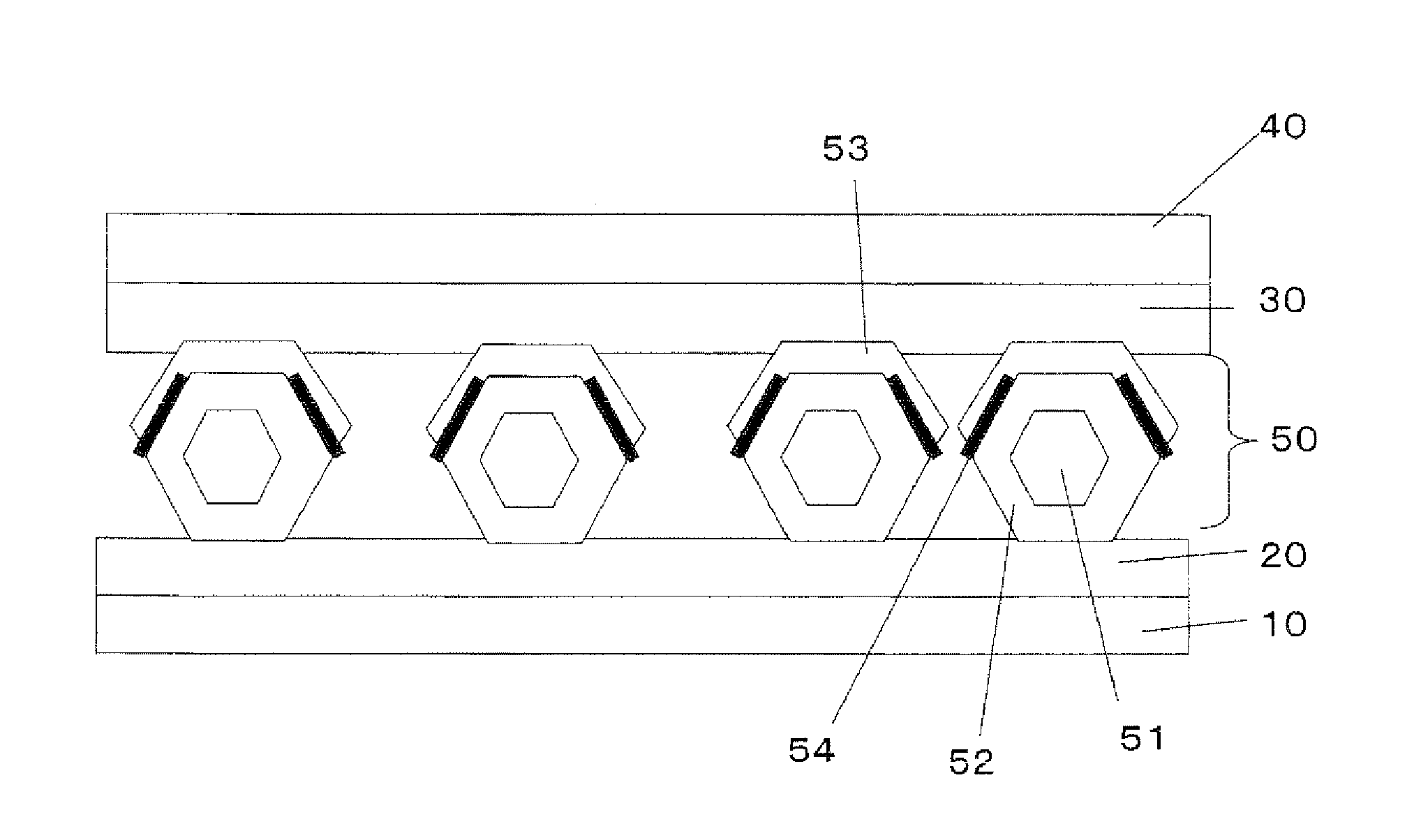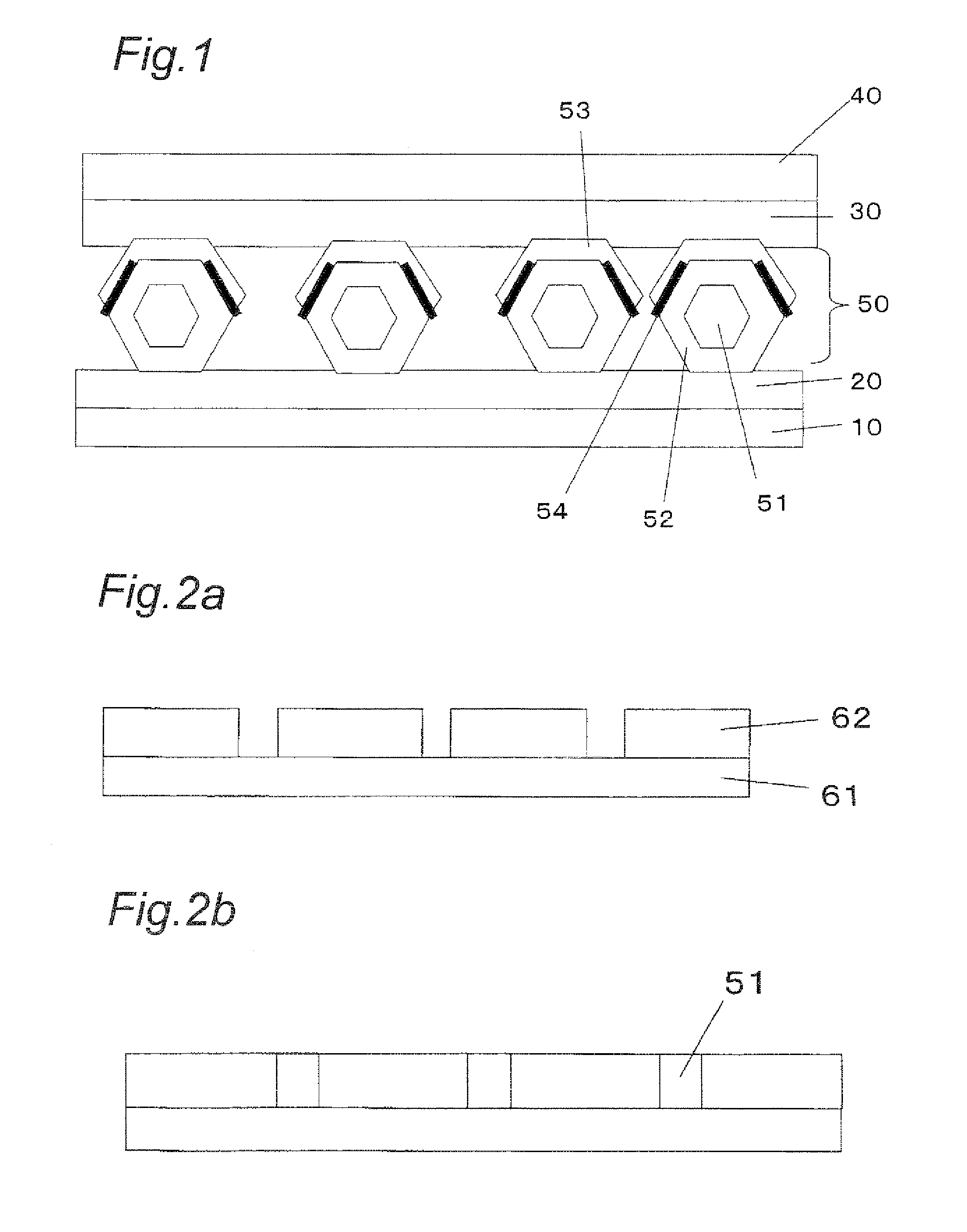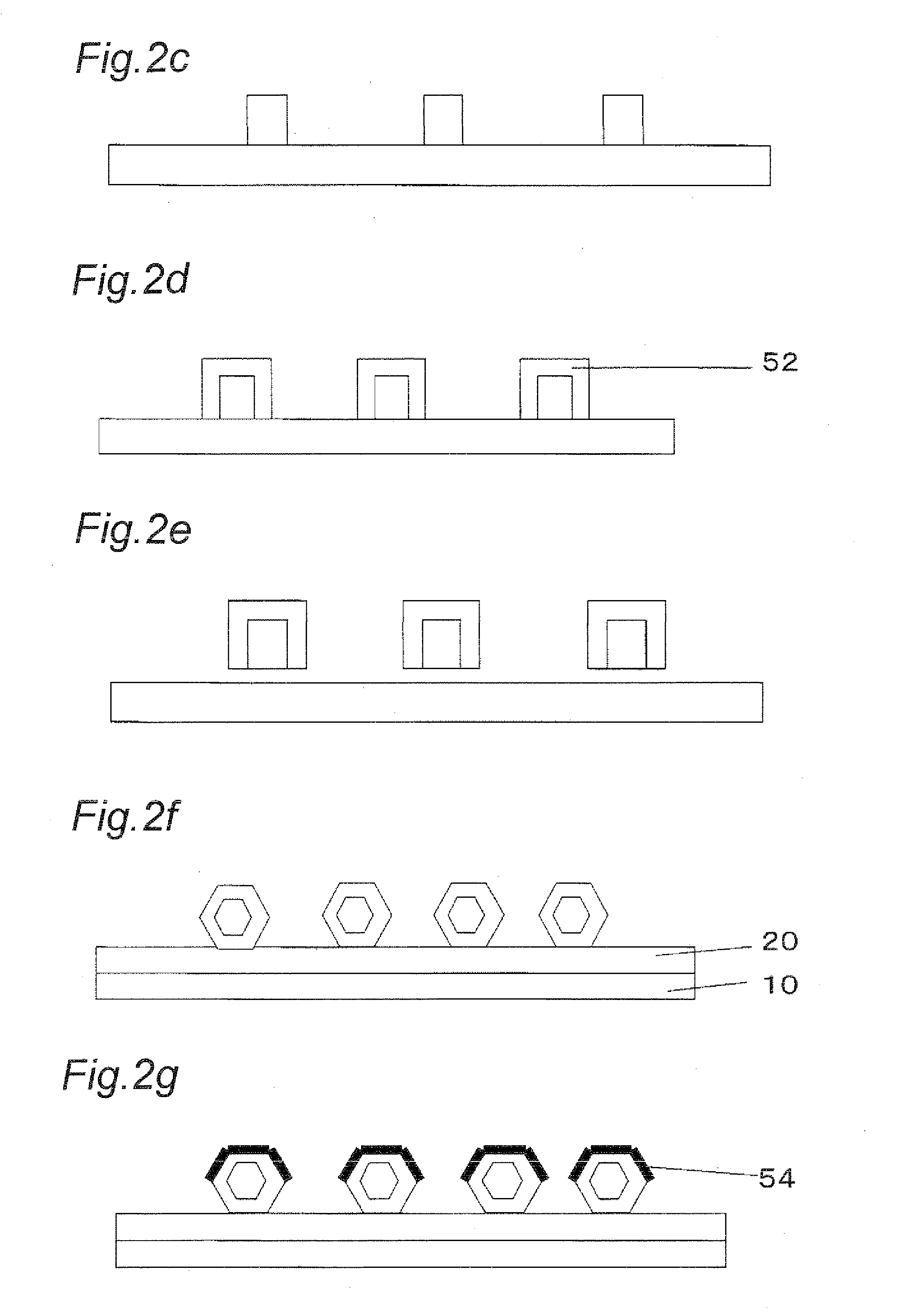Light emitting device
a light emitting device and light technology, applied in the direction of semiconductor devices, basic electric elements, electrical equipment, etc., can solve the problems of low efficiency as light emitting devices, low light emitting efficiency, low efficiency, etc., to achieve high efficiency, improve light emitting efficiency, and facilitate the effect of carrying ou
- Summary
- Abstract
- Description
- Claims
- Application Information
AI Technical Summary
Benefits of technology
Problems solved by technology
Method used
Image
Examples
first embodiment
[0062]FIG. 1 shows a schematic structure of a light emitting device in accordance with first embodiment of the present invention. This light emitting device has a structure in which a lower electrode 20, phosphor particles 50, an upper electrode 30 and an upper substrate 40 that are placed on a lower substrate 10 in this order. Additionally, FIG. 1 shows a minimum structure for use in emitting light, and other members may be further included thereon.
[0063]In this light emitting device, since an n-type nitride semiconductor portion 52 and a p-type nitride semiconductor portion 53 are placed inside one phosphor particle 50, light is easily emitted by a combination of an electron and a hole so that the light emitting efficiency is improved. Moreover, in each single phosphor particle 50, the n-type nitride semiconductor portion 52 and the p-type nitride semiconductor portion 53 are aligned, with c-axe of the respective crystal structures being in parallel with each other, and the n-type...
example 1
[0076]In the following, a method for manufacturing a light emitting device in accordance with example 1 will be described.
[0077](a) A sapphire substrate of 2 inches (5.08 cm) having a plane orientation (0, 0, 0, 1) was used as an epitaxial substrate. On the sapphire substrate, an SiO2 film having a thickness of 10 μm was formed by using a sputtering method, with a formation mask being interposed therebetween. The diameter of each pore portion was 2 μm. An SiO2 target was used as the target, and the sputtering was carried out in an Ar gas atmosphere so as to form the film.
(b) An AlN film was formed thereon by sputtering as a nucleus film. An Al target was used as the target, and the sputtering was carried out in an N2 gas atmosphere so as to form the film. The AlN was grown in the c-axis direction, with a thickness of 10 μm.
(c) The epitaxial substrate on which an epitaxial mask and nuclei had been formed was immersed in a 3% aqueous hydrofluoric acid solution so that the epitaxial ma...
example 2
[0083]In example 2, the same method as that of example 1 was carried out except that no insulating film for phosphor particles was formed so that a light emitting device was obtained.
[0084]When a voltage was applied to the resulting light emitting device in the same manner as in example 1 so as to emit light, its luminance was 520 cd / m2, and its light emitting efficiency was 1.1 lm / W.
PUM
 Login to View More
Login to View More Abstract
Description
Claims
Application Information
 Login to View More
Login to View More - R&D
- Intellectual Property
- Life Sciences
- Materials
- Tech Scout
- Unparalleled Data Quality
- Higher Quality Content
- 60% Fewer Hallucinations
Browse by: Latest US Patents, China's latest patents, Technical Efficacy Thesaurus, Application Domain, Technology Topic, Popular Technical Reports.
© 2025 PatSnap. All rights reserved.Legal|Privacy policy|Modern Slavery Act Transparency Statement|Sitemap|About US| Contact US: help@patsnap.com



